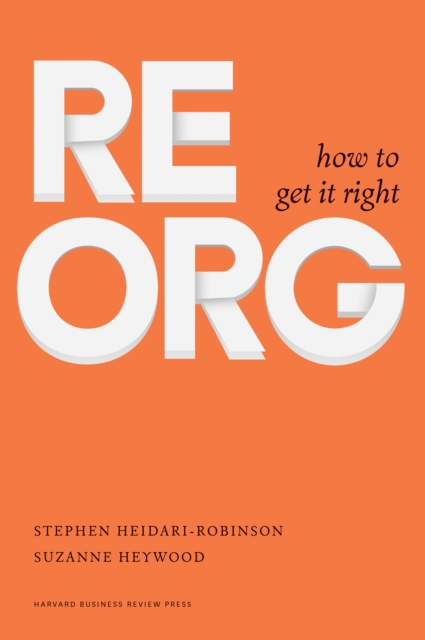
ReOrg : How to Get It Right EPUB
by Stephen Heidari-Robinson, Suzanne Heywood
EPUB
Description
A Practical Guide in Five StepsMost executives will lead or be a part of a reorganization effort (a reorg) at some point in their careers. And with good reason—reorgs are one of the best ways for companies to unlock latent value, especially in a changing business environment. But everyone hates them. No other management practice creates more anxiety and fear among employees or does more to distract them from their day-to-day jobs.
As a result, reorgs can be incredibly expensive in terms of senior-management time and attention, and most of them fail on multiple dimensions.
It’s no wonder companies treat a reorg as a mysterious process and outsource it to people who don’t understand the business.
It doesn’t have to be this way. Stephen Heidari-Robinson and Suzanne Heywood, former leaders in McKinsey’s Organization Practice, present a practical guide for successfully planning and implementing a reorg in five steps—demystifying and accelerating the process at the same time.
Based on their twenty-five years of combined experience managing reorgs and on McKinsey research with over 2,500 executives involved in them, the authors distill what they and their McKinsey colleagues have been practicing as an “art†into a “science†that executives can replicate—in companies or business units large or small.
It isn’t rocket science and it isn’t bogged down by a lot of organizational theory: the five steps give people a simple, logical process to follow, making it easier for everyone—both the leaders and the employees who ultimately determine a reorg’s success or failure—to commit themselves to and succeed in the new organization.
Information
-
Download - Immediately Available
- Format:EPUB
- Pages:256 pages
- Publisher:Harvard Business Review Press
- Publication Date:25/10/2016
- Category:
- ISBN:9781633692244
Other Formats
- Hardback from £21.75
Information
-
Download - Immediately Available
- Format:EPUB
- Pages:256 pages
- Publisher:Harvard Business Review Press
- Publication Date:25/10/2016
- Category:
- ISBN:9781633692244






